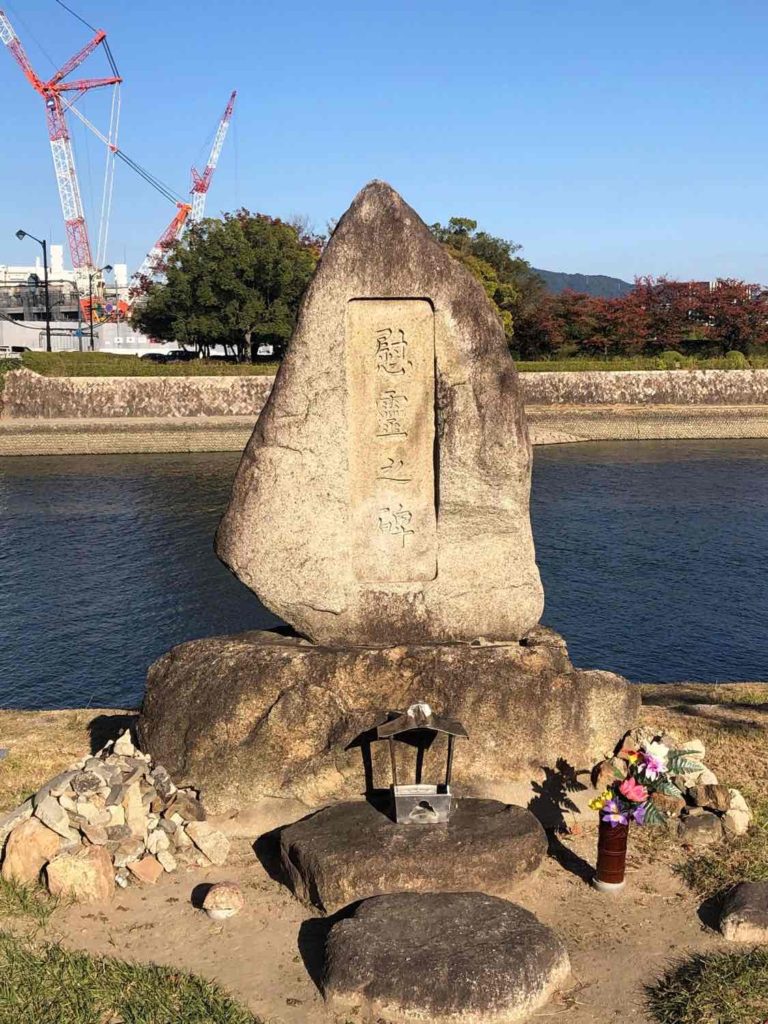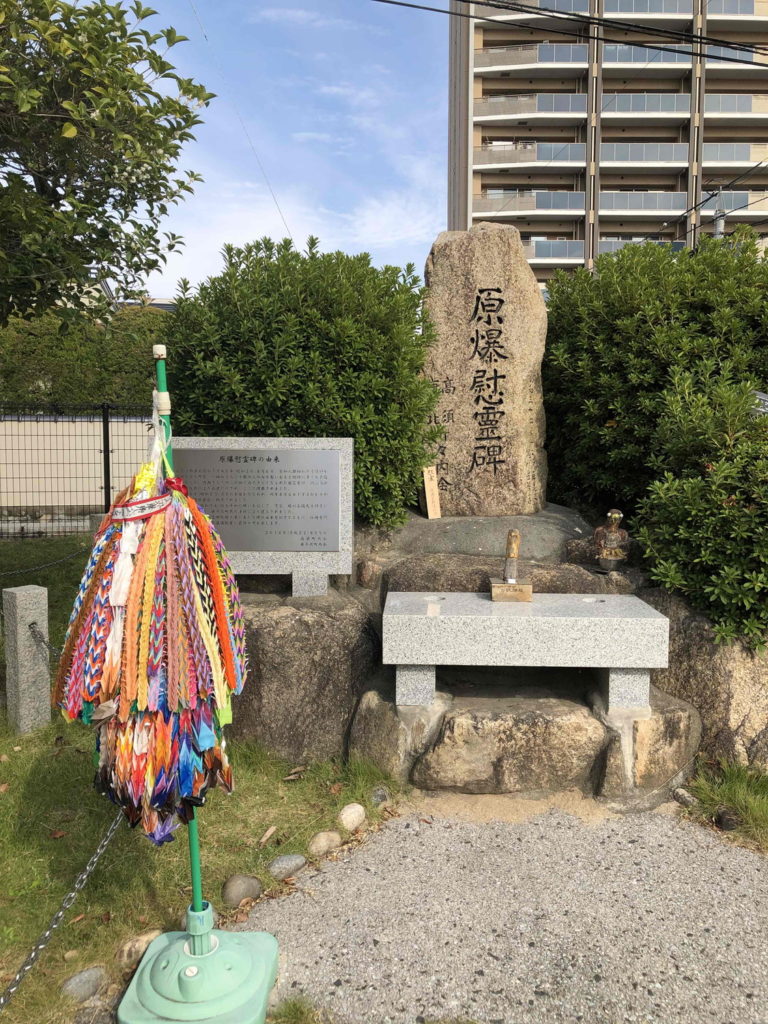Masao Ito
From “Never Forget” to “Never Again”
2. The Atomic Bombing
When the A-bomb was dropped in 1945, my eldest brother, Teruo, was a sixth grader in Fukuromachi Elementary School (460m from the hypocenter, the second nearest elementary school from the hypocenter), and my elder sister, Ritsuko, was a third grader in Honkawa Elementary School (410m from the hypocenter, the nearest elementary school from the hypocenter.) Neither school was in our neighborhood, so they went all the way to school by streetcar. At that time, I was too young to wonder why they went to such elementary schools in center city. Even in later years, the reason is still unclear.
In April that year, the Japanese government decided to evacuate third to sixth graders from urban areas to relatives’ houses in the countryside or to rural temples in groups by school. However, Teruo and Ritsuko were not evacuated. On August 6, Teruo went to school, and Ritsuko was staying with our relative in Sorasaya-cho (present Tokaichi-machi, 600m from the hypocenter) for several days. I was four and a half years old and my younger sister was one and a half.
That morning, I was riding my tricycle around on the street in front of my house. All of a sudden, a whitish-blue flash ran from the east to the west in front of my eyes. I was blown off my tricycle by the blast, and I became unconscious for a moment. After I came to, I ran crying into my house. Our house, which was located some distant away from the hypocenter, wasn’t destroyed or blown down. At the entrance hall, my mother was about to come out to look for me. When I began to take off my shoes there, she said, “Keep your shoes on, and hurry!” Inside the house, there were window glass fragments everywhere. Holding my hand, my mother pulled me into the innermost room, where an air-raid shelter was dug under the tatami floor. That shelter was big enough to hold our entire family. I had several cuts in my thigh and other parts of my body, probably from the glass fragments. I am over 80 now, but one of the glass scars remains in my thigh even today.
I heard that heavy black rain fell about an hour after the A-bombing. Black rain was sticky large raindrops and was later found to contain radioactive substances combined with soot and dust stirred up by the A-bomb explosion. Not only people who were caught in the black rain at that time, but also those who drank the rainwater and those who later ate vegetables and crops cultivated in the contaminated soil, suffered from radioactive-related diseases. The area I was living in is said to have had the largest amount of black rain, but I didn’t get exposed to it thanks to staying in the shelter.
After a while, a military order to take part in the rescue activities came to my father’s factory office. He owned a truck, which was rare those days, so he immediately headed for the city center in the truck. Meanwhile, many people with severe injuries and burns were staggering in a stream down the road in front of our house, fleeing west, away from the city. Some of them came into our house for help. My mother and our ten employees took them into the factory next to our house, let them lie down on the factory’s earth floor and gave them some treatment. Many of them died one after another within a week.
After finishing his military rescue activities on August 6, my father went to Fukuromachi Elementary School to search for my elder brother Teruo, and then to Sorasaya-cho for my elder sister Ritsuko. After night fell, he came back home, bringing Teruo, who was injured, with him. At the time of the A-bombing he had been inside the Fukuromachi Elementary School building and escaped death there. At the same time, the morning assembly was being held on the school grounds, and all the students outside were killed instantly. My parents took Teruo into a different room from the one I was in, so that I could not see him. I think Teruo’s injuries and burns were too horrible and cruel for a small child to see. In spite of my parents’ concentrated care, Teruo passed away three weeks later, on August 29, and his body was cremated in a clear space in our neighborhood. For Ritsuko, my father had searched the area where our relative’s house had been in Sorasaya-cho because Ritsuko was staying there. But there were no remains at all except burned-out ruins.
Bodies of people who died in my family’s neighborhood, Takasu and Kogo-kita, were gathered by the locals in the same clear space as Teruo was cremated (present Kogo Daiichi Park). Bodies were gathered ten at a time and cremated. Ashes of those who were fortunate enough to return home alive and died after some time, like Teruo, were taken home by their families. But the ashes of those who died in this neighborhood, who never got home, were buried there. The burning smell was unbearably bad in the hot summer, and I vaguely remember that cremations continued for about a week. The memory of that scene and smell has never left me.
In 1948, the excavation of that area found ashes of 192 bodies there, and those ashes were placed inside the Atomic Bomb Memorial Mound in Peace Memorial Park. The Takasu and Kogo-kita Townspeople Monument was erected by the locals in 1954.
After the war, every year on August 6, we visited our family grave, where Teruo’s ashes are interred. But for Ritsuko, whose ashes we never recovered, instead, we paid a visit and offered flowers to the Honkawa Townspeople Monument on the river bank at the west end of the Sorasaya Bridge. Sorasaya-cho and its nearby areas were quite close to the hypocenter, and thousands of dead bodies in these areas were gathered together in Honkawa Elementary School, cremated there, and buried around the place where the monument is now standing. Their ashes were later removed and placed inside the A-bomb Memorial Mound. A monument was erected there by volunteers from local neighborhood associations. In addition, the Honkawa-area Monument is standing in Honkawa Elementary School, dedicated to the teacher and student victims. My second elder brother and younger brother, who were staying with my mother’s parents in Misasa, were safe, only with some burns and injuries.

